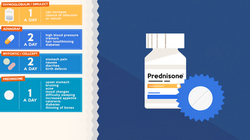top of page
transPLANTS: An Animated Guide to Renal Transplanatation
My Master's Research Project was created for St. Joseph's Hamilton Healthcare Kidney Transplant Program. transPLANTS: An Animated Guide to Renal Transplantation is a 2D patient education program detailing the process of kidney transplantation with animated illustrations. It uses a unique visual metaphor to educate fundamental concepts surrounding the immune system and immunosuppression therapy, classes and side effects of immunosuppressive medications, and kidney healthcare strategies.
In September 2017, transPLANTS: An Animated Guide to Renal Transplantation was selected as a Top 3 National Finalist in CST-Astellas Transformative Thinking in Transplantation T3 Competition and received funding support to be expanded to additional modules.
There are currently three animated modules: Module 1: Understanding Transplant Immunology, Module 2: Immunosuppressant Medications, and Module 3: Donor Lists & Options.

CST-Astellas
Transformative Thinking in Transplantation T3 Competition
2017
 |  |  |
|---|---|---|
 |  |  |
 |  |  |
Press
Development Process
Initial Research
In February 2016, I was fortunate to have the opportunity to shadow the transplant physicians at St. Joseph's Kidney Transplant Inpatient Unit & Clinic. During this time, I sat in on appointments and observed physician-patient communication to survey the level and quality of patient education. I found that knowledge was only orally translated to patients. Despite having a facility for patient education, it was not actively used. Some pamphlets and booklets were made available to patients, but otherwise the clinic contained no visual teaching resources.
Building the Narrative
To come up with the visual metaphors for this project, I asked the transplant physicians what analogies they used when teaching immunosuppression. All of them said they use war/battle metaphors. I did some additional research and found literature that suggested negative connotations to the human body were detrimental to patient healthcare. As a result, we came up with a new metaphor: relating the human body and it's immune system to a flower garden and a weed-killing system. This metaphor informed the rest of the narrative and the visuals surrounding their communication.
Writing the Script
After the narrative was designed, I wrote a script to complement the proposed visual metaphors. Several iterations were made between myself and my content advisors.
Storyboarding
The storyboard process was long and arduous. I had lots of different ideas to best visualize the script. Overcome with frustration, I transferred all of my ideas from paper onto Post-It notes, and shuffled them around until I had a product that supported the flow of the narrative and matched the aesthetic of the project. Once I had figured this out, I transferred the ideas to a proper storyboard.
Preparing for Pre-Production
Once the storyboarding process was complete, I created a document that broke down the narrative into smaller scenes and sequences. I organized my scenes, script, and required visual assets into smaller, digestible tasks.
Creating Visual Assets
Once the storyboarding process was complete, I created a document that broke down the narrative into smaller scenes and sequences. I organized my scenes, script, and required visual assets into smaller, digestible tasks.
Animating
Once the storyboarding process was complete, I created a document that broke down the narrative into smaller scenes and sequences. I organized my scenes, script, and required visual assets into smaller, digestible tasks.
Editing
After the first draft of the animation was created, I went through and cleaned up parts of the animation that needed extra attention. To the right you can see some changes that were made to visual style of some of the characters.
Music and Sound Effects
Once I was happy with the flow and style of the animation, I manually inserted audio tracks into After Effects to create the mood and ambience for several scenes.
Additional Modules
While the above outlines the general process for creating one animation, transPLANTS is expected to have 4 modules in total. Development of these modules is currently ongoing and will tackle other areas in transplantation such as immunosuppressive medications, donor options, and short term and long term healthcare outcomes. Three modules are currently completed. Stay tuned for more information!








bottom of page
